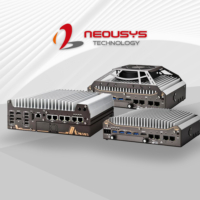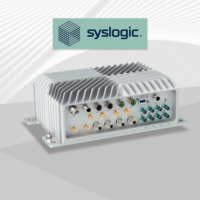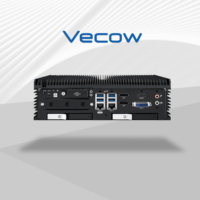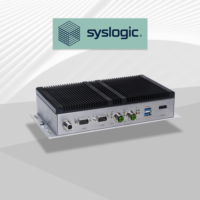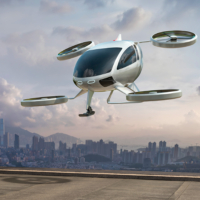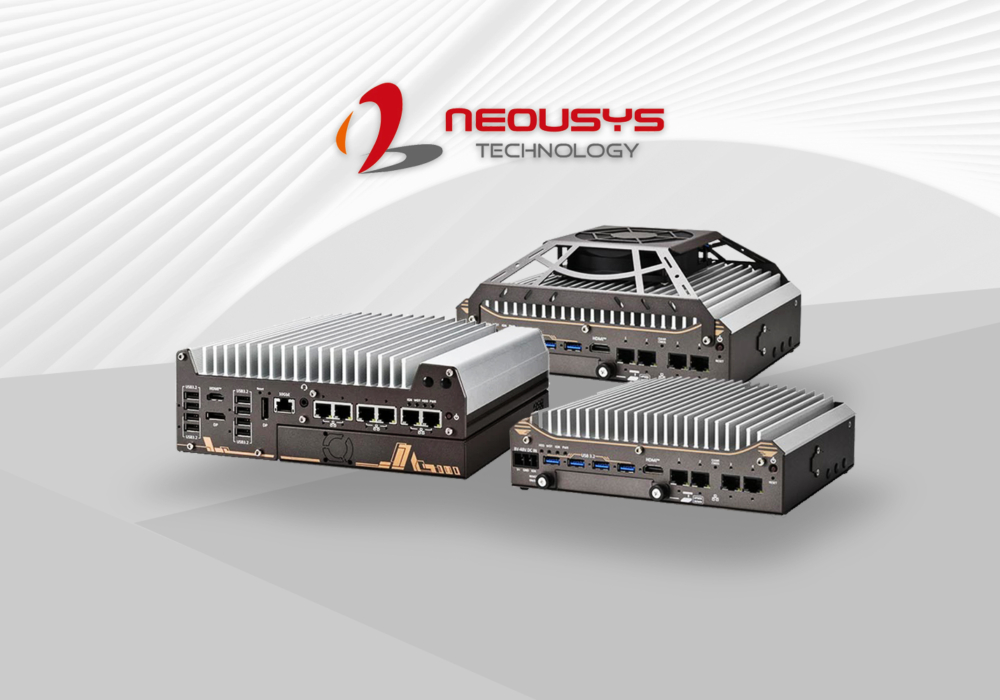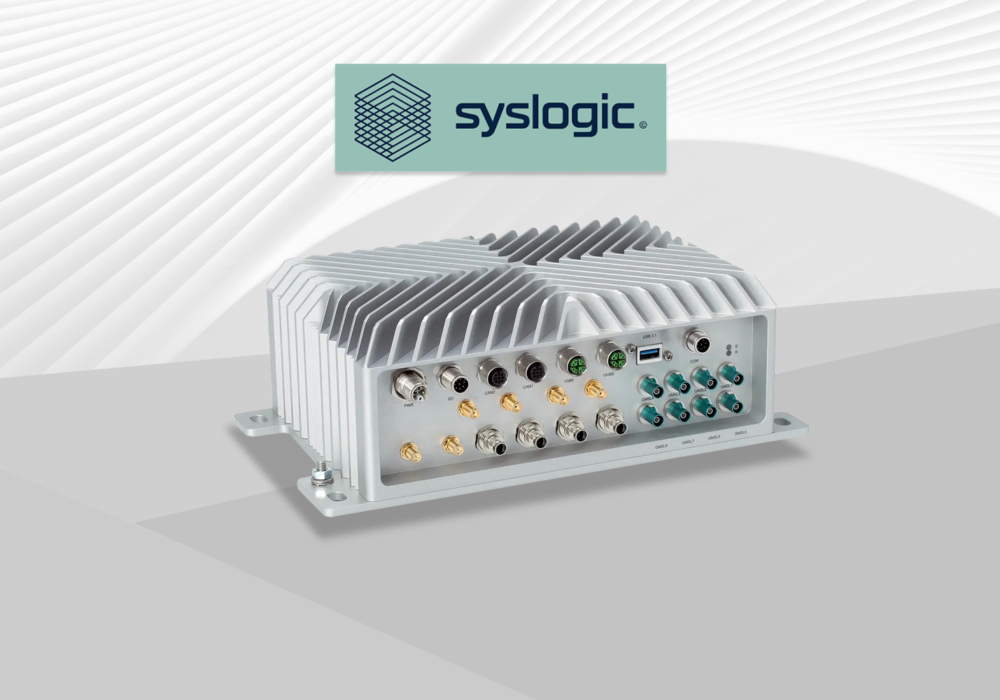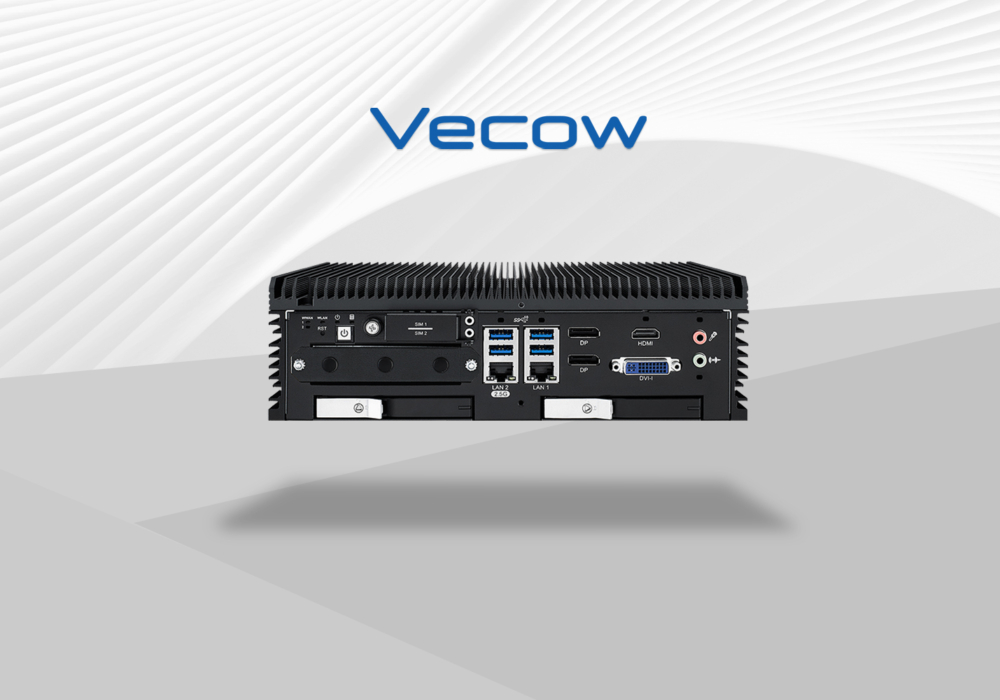In this article:
- Introduction
- ARM Technology and NVIDIA Jetson AGX Orin
- JCO-6000-ORN Series: The Flagship Model with Jetson AGX Orin Processor
- JCO-6000-ORN-A - External I/O Mechanical Layout
- JCO-6000-ORN-A - Dimensions
- JCO-6000-ORN-A - Expansion Options
- JCO-6000-ORN-B - External I/O Mechanical Layout
- JCO-6000-ORN-B - Dimensions
- JCO-6000-ORN-B - Expansion Options
- Suitable Applications
- Relevant Sectors
- Summary
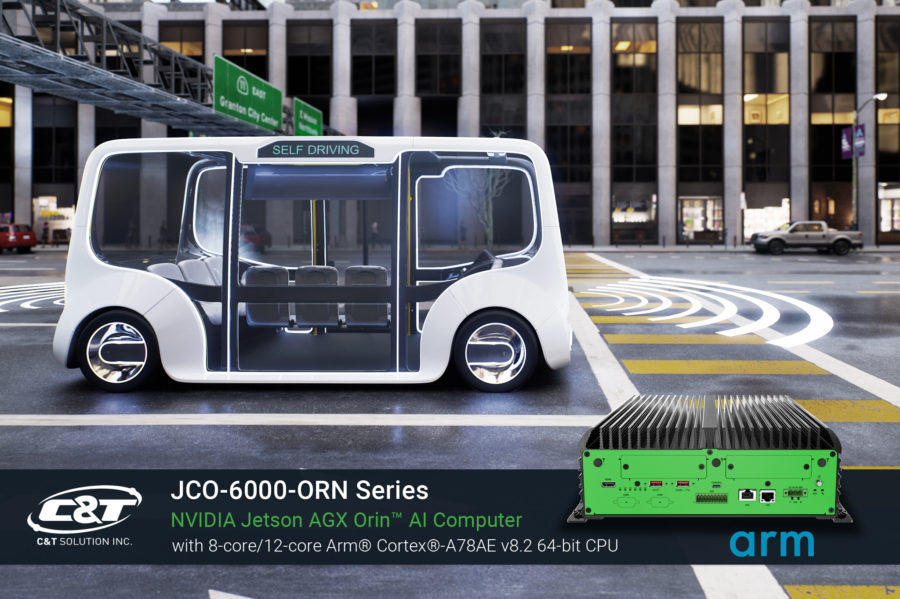
Introduction
C&T Solution recently announced the innovative JCO Series, a revolutionary collection of Edge AI computers powered by the advanced NVIDIA Jetson AGX Orin system-on-modules and marks C&T Solution’s pioneering entry into ARM-based architecture, representing a significant leap in harmonising performance with power efficiency.
The introduction of ARM technology in the JCO series underscores their commitment to leading-edge computing innovation, particularly in creating robust and efficient computing solutions. The JCO Series is designed to cater to a variety of needs, featuring three scalable models:
- High Performance: JCO-6000-ORN
- Mid-Range: JCO-3000-ORN
- Entry Level: JCO-1000-ORN
ARM Technology and NVIDIA Jetson AGX Orin
ARM architecture, developed by ARM Holdings (now part of NVIDIA), is a family of reduced instruction set computing (RISC) architectures for computer processors. It is widely used in various applications due to its efficiency, low power consumption, and high performance. Here are some key points about ARM architecture:
Key Features of ARM Architecture
- RISC Design:
- ARM architecture is based on the RISC design philosophy, which emphasises a small, highly optimised set of instructions. This approach simplifies the processor design, leading to increased efficiency and performance.
- Low Power Consumption:
- ARM processors are known for their low power consumption, making them ideal for mobile devices, embedded systems, and other applications where energy efficiency is critical. This characteristic has led to their widespread adoption in smartphones, tablets, and IoT devices.
- Scalability and Flexibility:
- ARM architecture is highly scalable, with different cores designed for various performance and power needs. From the low-power Cortex-M series for microcontrollers to the high-performance Cortex-A series for application processors, ARM offers solutions for a wide range of applications.
- High Performance:
- Despite their efficiency, ARM processors deliver high performance. Modern ARM cores, like the Cortex-A78 and Cortex-X1, offer capabilities that rival traditional desktop and server processors.
- Wide Adoption:
- ARM architecture is widely used across various industries, including consumer electronics, automotive, industrial automation, and healthcare. Its adaptability and broad ecosystem support make it a popular choice for developers.
- Ecosystem and Software Support:
- ARM has a robust ecosystem with extensive software support, including operating systems like Android, iOS, and many Linux distributions. The ARM ecosystem includes a vast array of development tools, libraries, and resources that facilitate development and deployment.
Technical Aspects
- Instruction Set Architecture (ISA):
- ARM ISA includes both 32-bit (ARMv7) and 64-bit (ARMv8 and above) versions. The 64-bit architecture (ARMv8-A) introduced significant improvements, including enhanced performance and security features.
- Energy Efficiency:
- The architecture’s energy efficiency is achieved through a combination of the RISC design, which reduces the complexity of instructions, and advanced power management techniques that dynamically adjust power usage based on workload.
- Multi-Core Processing:
- ARM processors often feature multi-core designs, enabling parallel processing and improved performance for multitasking and compute-intensive applications.
- Advanced Features:
- Modern ARM processors include features like SIMD (Single Instruction, Multiple Data) for parallel processing, TrustZone for enhanced security, and NEON for advanced media processing.
Use Cases
- Mobile Devices: ARM’s low power consumption and high performance make it the dominant architecture in smartphones and tablets.
- Embedded Systems: ARM cores are widely used in embedded applications, from simple microcontrollers to complex automotive systems.
- IoT Devices: The efficiency and scalability of ARM processors make them ideal for Internet of Things (IoT) devices.
- Servers and Data Centres: ARM’s 64-bit architecture is increasingly being used in servers and data centres due to its performance-per-watt advantage.
ARM architecture’s combination of high efficiency, scalability, and robust performance makes it a leading choice across various computing segments. Its widespread adoption, extensive ecosystem, and continuous innovation ensure that it remains at the forefront of modern computing solutions.
NVIDIA Jetson AGX Orin modules are state-of-the-art embedded computing systems that integrate the latest advancements in ARM architecture with NVIDIA’s powerful Ampere GPU technology. Featuring up to 2048 CUDA cores and 64 Tensor Cores, the Jetson AGX Orin offers unparalleled AI processing power. With an Arm Cortex-A78AE CPU comprising up to 12 cores, it ensures efficient performance across a broad range of applications. Additionally, the module supports up to 64GB of LPDDR5 memory, providing high-bandwidth data processing crucial for complex AI models and large datasets.
The Jetson AGX Orin delivers up to 275 TOPS (Tera Operations Per Second) of AI performance, making it ideal for demanding AI workloads such as computer vision, natural language processing, and autonomous systems. Its all-in-one design includes CPU, GPU, memory, and power management, ensuring seamless and efficient operation.
Applications
The Jetson AGX Orin is designed for a wide range of applications, including but not limited to:
- Autonomous Machines: Robotics, drones, and autonomous vehicles that require real-time AI inference and high computational power.
- AIoT (AI + IoT): Smart cities, industrial automation, and IoT devices that benefit from Edge AI capabilities.
- Healthcare: Medical imaging, diagnostics, and other health tech applications that need advanced AI processing.
- Smart Retail: Customer analytics, automated checkout systems, and inventory management.
- Embedded Systems: Any embedded AI application that needs compact, energy-efficient, yet powerful computing solutions.
Advantages
- Performance: With high AI performance and efficient power usage, it provides the computational muscle needed for modern AI tasks.
- Versatility: Suitable for a broad range of industries and applications due to its robust feature set.
- Ecosystem: Leverages NVIDIA’s extensive AI and software ecosystem, making development more straightforward and efficient.
The Jetson AGX Orin series, including the AGX, NX, and Nano modules, offers advanced solutions for Edge AI, empowering manufacturers to develop powerful, efficient, and durable devices for various applications such as robotics, industrial automation, security, smart transportation, and smart cities.
Learn more about NVIDIA Jetson Modules
JCO-6000-ORN Series: The Flagship Model with Jetson AGX Orin Processor
At the forefront of C&T’s JCO Series, the JCO-6000-ORN Series stands as a powerhouse, engineered to deliver top-tier AI performance. Equipped with the NVIDIA Jetson AGX Orin module, it offers an impressive capability of up to 275 TOPS of AI performance, adaptable to power needs ranging from 15W to 60W.
This high-end model is designed to tackle the most demanding AI tasks with ease, featuring a rugged, fanless design and support for Premio’s advanced EDGEBoost I/O technology.
It includes customisable I/O slots for unparalleled flexibility, encompassing specialised USB ports, RJ45 LAN/POE connections, and 10 GbE RJ45 options.
The JCO-6000-ORN is an advanced Edge AI computer powered by the NVIDIA Jetson AGX Orin processor. Designed for demanding applications, it offers a robust set of features that ensure high performance, scalability, and versatility. Below are the detailed features and the benefits they bring:
Features and Benefits
- 8-core/12-core Arm® Cortex®-A78AE v8.2 64-bit CPU
- Feature: The JCO-6000-ORN Series is equipped with either an 8-core or 12-core Arm Cortex-A78AE CPU, which is part of the ARMv8.2 architecture.
- Benefits: This powerful CPU architecture ensures high performance for complex computational tasks, providing robust processing power while maintaining energy efficiency. This is critical for applications requiring real-time data processing and high-speed calculations, such as autonomous driving and industrial automation.
- LPDDR5 3200MHz on SOM, 32 GB/64 GB
- Feature: The system on module (SOM) includes up to 64 GB of LPDDR5 memory running at 3200MHz.
- Benefits: High-bandwidth memory ensures smooth performance and quick access to large datasets, essential for AI and machine learning tasks. This is particularly beneficial for applications like video analytics and real-time data processing.
- 1x HDMI, 3840 x 2160 @ 60Hz
- Feature: Supports HDMI output with a resolution of up to 3840 x 2160 at 60Hz.
- Benefits: This enables high-definition video output, suitable for applications requiring high-quality visual displays, such as digital signage, control rooms, and video conferencing systems.
- 1x GbE, 1x 10 GbE (Wake-on-LAN and PXE)
- Feature: Includes one Gigabit Ethernet and one 10 Gigabit Ethernet port, with support for Wake-on-LAN and Preboot Execution Environment (PXE).
- Benefits: High-speed networking capabilities ensure fast and reliable data transfer. The 10 GbE port is especially useful for applications requiring large data throughput, such as real-time video streaming and big data analysis.
- 2x External SIM Socket, 1x Micro SD Socket
- Feature: Provides two external SIM sockets and one Micro SD socket.
- Benefits: Enables cellular connectivity and expandable storage options, enhancing the system’s flexibility for mobile and remote applications. This is ideal for IoT deployments, field monitoring, and mobile robotics.
- 1x eMMC 5.1 Storage, 64 GB
- Feature: Includes 64 GB of eMMC 5.1 storage.
- Benefits: Offers reliable and fast on-board storage for the operating system and applications, ensuring quick boot times and efficient data access.
- 1x M.2 (M Key, 2242/2260/2280, PCIe x4, Support NVMe)
- Feature: Supports an M.2 slot for NVMe SSDs with PCIe x4.
- Benefits: Provides the option to expand storage with high-speed NVMe SSDs, ensuring rapid data read/write speeds, crucial for applications that handle large volumes of data.
- 1x USB 3.2 Gen 2, 1x USB Type C, 1x USB 2.0
- Feature: Offers multiple USB ports including USB 3.2 Gen 2, USB Type-C, and USB 2.0.
- Benefits: Allows for versatile connectivity options for peripherals and external devices, enhancing the system’s flexibility for various use cases.
- 8x DI + 8x DO with isolation
- Feature: Provides 8 digital inputs and 8 digital outputs with isolation.
- Benefits: Facilitates secure and reliable interfacing with other industrial devices and sensors, crucial for automation and control applications.
- 9 to 48VDC Wide Range Power Input Supporting AT/ATX Mode
- Feature: Supports a wide range of power inputs from 9 to 48VDC and AT/ATX mode.
- Benefits: Ensures compatibility with various power sources and provides flexibility for deployment in different environments, including vehicles and industrial settings.
- Wide Operating Temperature -20°C to 60°C (60W CPU)
- Feature: Can operate in temperatures ranging from -20°C to 60°C.
- Benefits: Suitable for use in harsh environments and extreme conditions, making it ideal for outdoor applications, industrial sites, and mobile units.
- Support GMSL2 QUAD Port Mini Fakra, 8x Ports | 1280×720 @30FPS (optional)
- Feature: Optionally supports GMSL2 QUAD Port Mini Fakra with 8 ports at 1280×720 @30FPS.
- Benefits: Allows high-speed, long-distance transmission of video data, useful for applications like advanced driver-assistance systems (ADAS) and multi-camera setups in robotics.
- Up to 4x EDGEBoost I/O Support
- Feature: Supports up to 4x EDGEBoost I/O. (JCO-6000-ORN-A 2x EDGEBoost, JCO-6000-ORN-B 4x EDGEBoost)
-
- Benefits: Enhances I/O capabilities, allowing for the integration of additional peripheral devices and expansion modules, which is beneficial for applications requiring extensive connectivity and modularity.
JCO-6000-ORN-A - External I/O Mechanical Layout
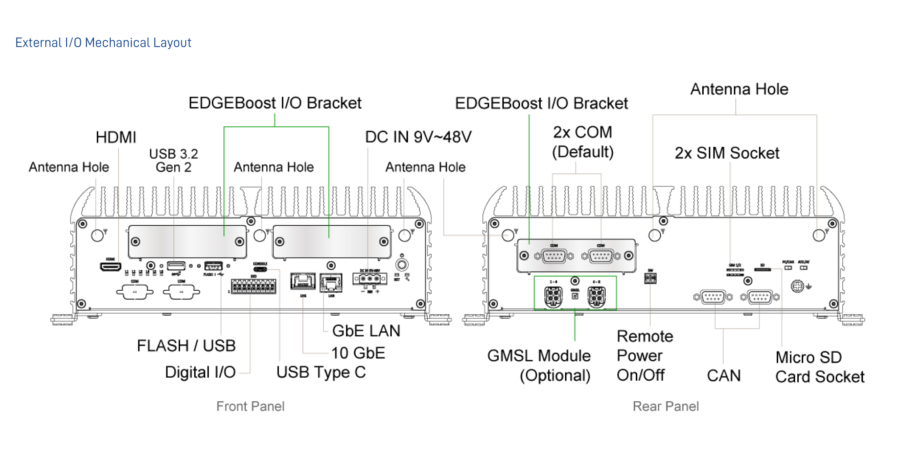
JCO-6000-ORN-A - Dimensions
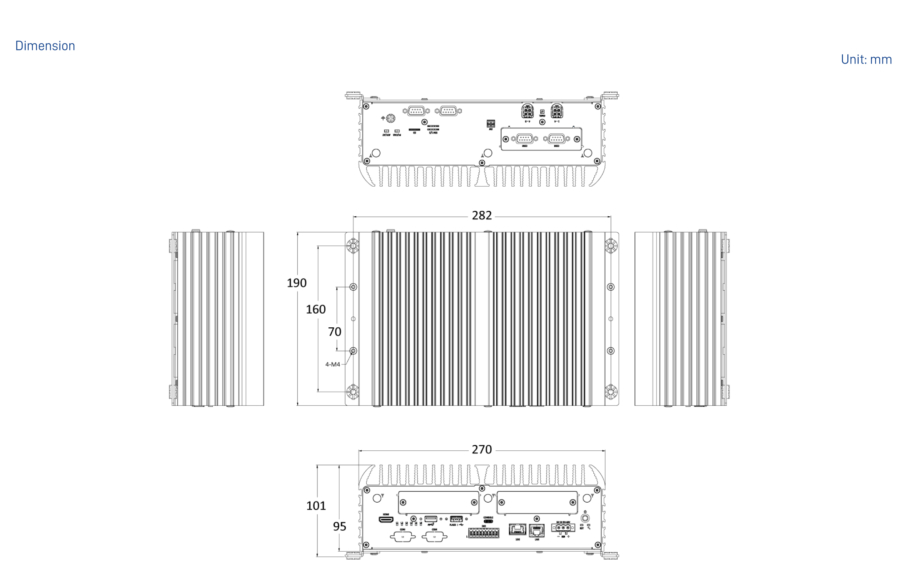
JCO-6000-ORN-A - Expansion Options
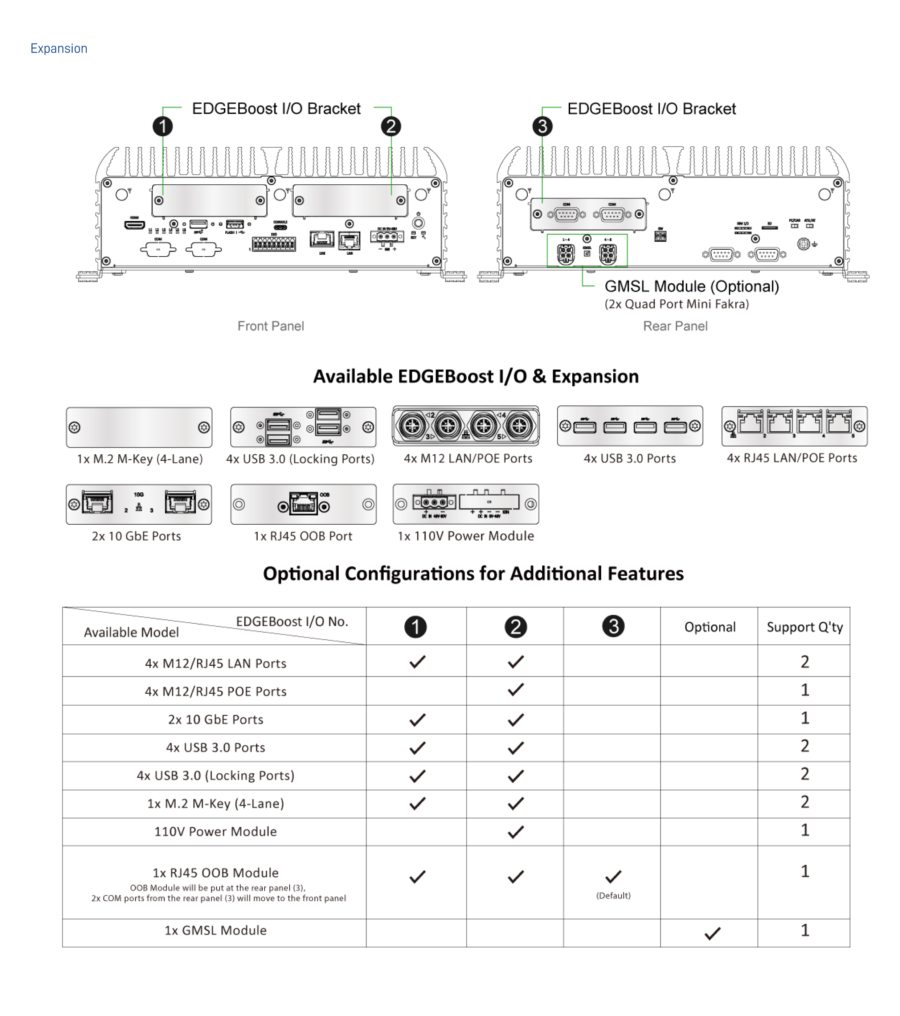
JCO-6000-ORN-B - External I/O Mechanical Layout
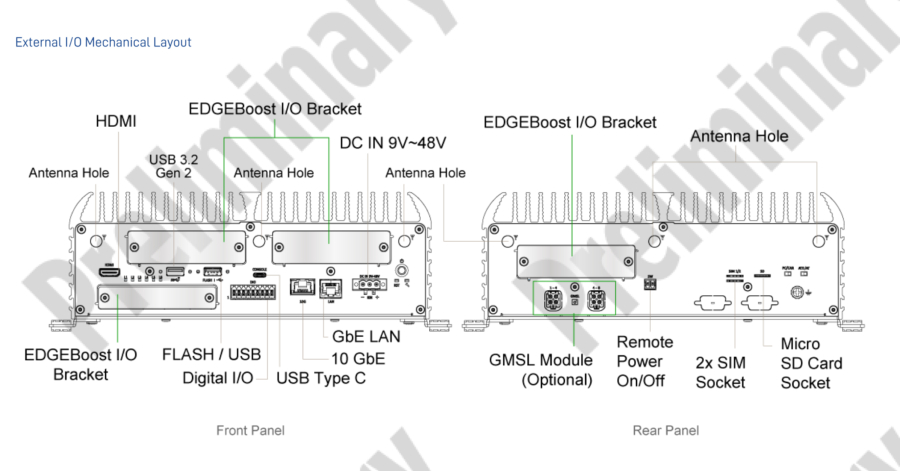
JCO-6000-ORN-B - Dimensions
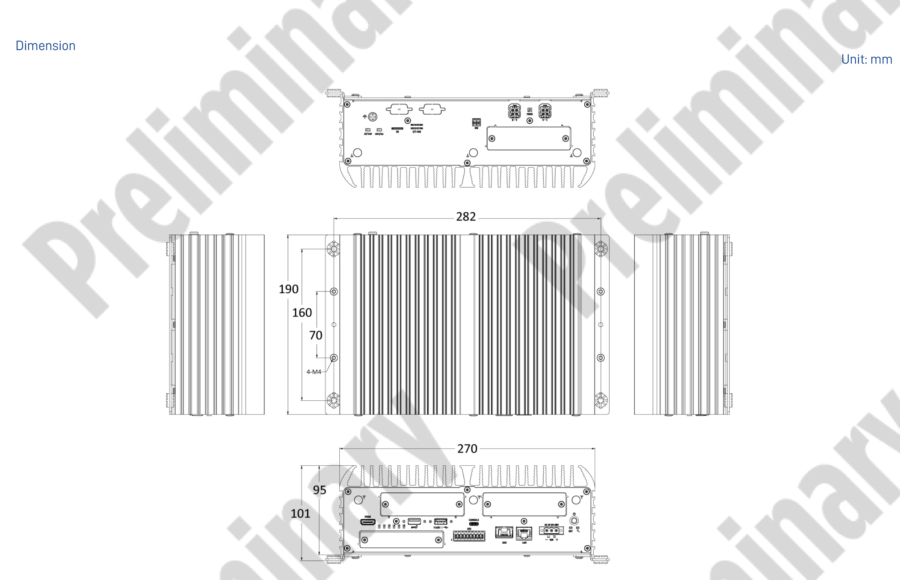
JCO-6000-ORN-B - Expansion Options
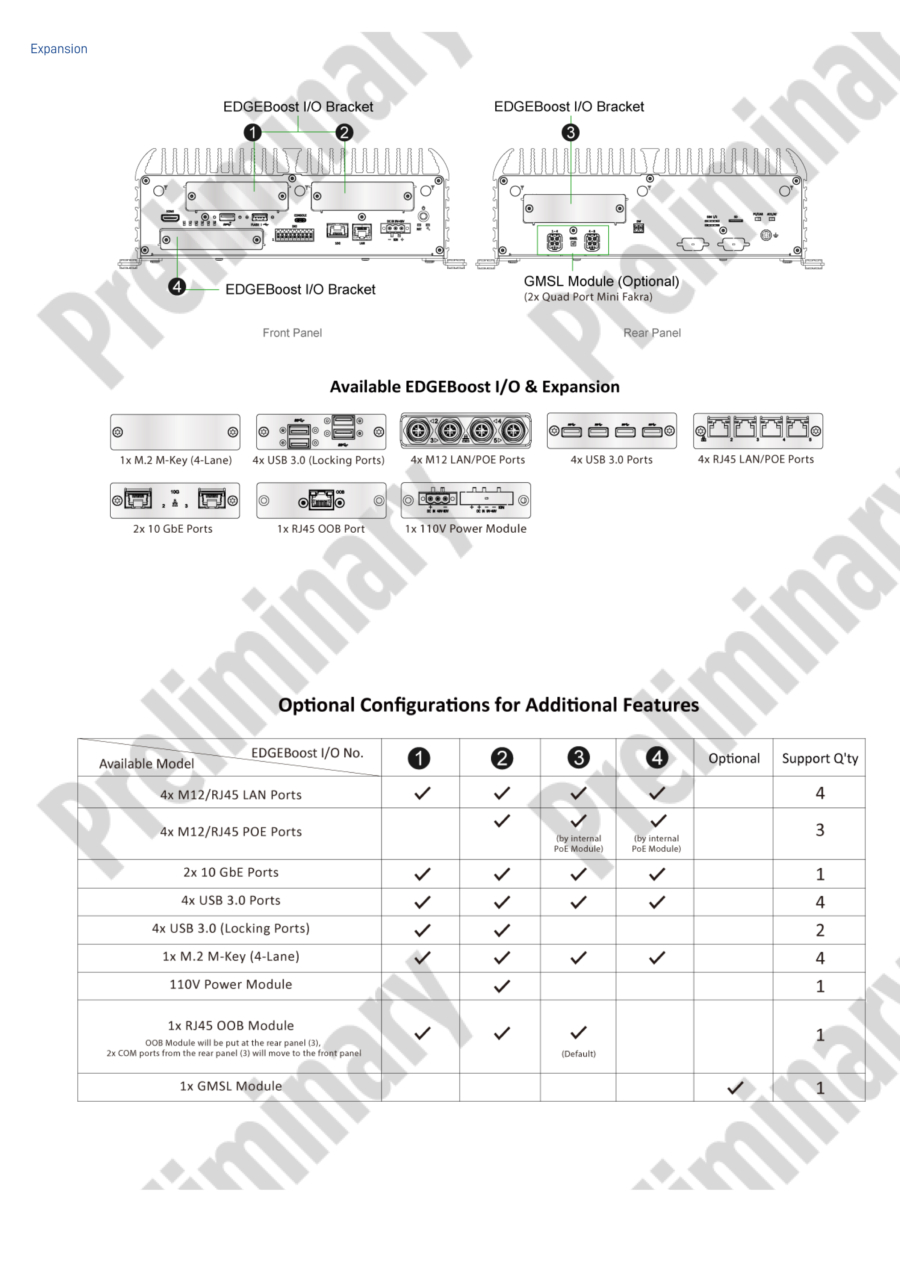
Suitable Applications
- Computer Vision
- Real-time Object Detection and Recognition: The JCO-6000-ORN can process live video feeds to identify and classify objects in real time, useful in applications like surveillance, autonomous vehicles, and retail analytics.
- Facial Recognition Systems: Utilises AI algorithms to accurately identify individuals, enhancing security systems in places like airports, offices, and public events.
- Image and Video Processing: Enhances the quality of images and videos through techniques like noise reduction, super-resolution, and automated editing, beneficial for media and entertainment industries.
- Autonomous Systems
- Autonomous Vehicles and Drones: The JCO-6000-ORN provides the necessary computational power for real-time decision-making, sensor fusion, and navigation, essential for self-driving cars and drones.
- Robotics (Industrial, Service, and Consumer): Powers robotic arms in manufacturing, service robots in hospitality, and household robots, enabling tasks like assembly, customer service, and cleaning.
- Unmanned Aerial Vehicles (UAVs): Enhances UAV capabilities for applications in agriculture, surveillance, and delivery services through advanced AI and edge computing.
- Industrial Automation
- Predictive Maintenance: Analyses data from machinery to predict failures before they occur, reducing downtime and maintenance costs in factories and industrial settings.
- Quality Control and Inspection Systems: Uses AI to inspect products for defects and ensure quality, increasing efficiency and accuracy in manufacturing processes.
- Automated Guided Vehicles (AGVs): Powers AGVs in warehouses to transport goods, improving logistics and inventory management.
- Healthcare
- Medical Imaging Analysis (MRI, CT Scans): Assists radiologists by providing faster and more accurate analysis of medical images, improving diagnostic accuracy and patient outcomes.
- Remote Patient Monitoring: Enables continuous monitoring of patients’ health through wearable devices and sensors, providing real-time data to healthcare providers.
- AI-powered Diagnostic Tools: Supports AI-driven tools that assist doctors in diagnosing diseases and recommending treatments, enhancing the efficiency and effectiveness of healthcare delivery.
- Smart Cities
- Intelligent Traffic Management Systems: Optimises traffic flow and reduces congestion using AI to analyse real-time traffic data, improving urban mobility.
- Public Safety and Surveillance: Enhances city surveillance systems with AI for real-time threat detection and response, improving public safety.
- Environmental Monitoring: Monitors air quality, noise levels, and other environmental factors, helping cities manage pollution and improve residents’ quality of life.
- Retail and Logistics
- Automated Checkout Systems: Enables cashier-less stores where customers can simply walk out with items, with payments automatically processed, enhancing the shopping experience.
- Inventory Management and Tracking: Uses AI to monitor inventory levels in real-time, reducing stockouts and overstock situations, and optimising supply chain efficiency.
- Customer Behaviour Analytics: Analyses customer interactions and behaviours in-store to personalise shopping experiences and improve sales strategies.
- Agriculture
- Precision Farming with AI-powered Sensors and Drones: Provides detailed analysis of crop health, soil conditions, and weather patterns, helping farmers make data-driven decisions to improve yield and efficiency.
- Crop Health Monitoring: Uses AI to detect diseases and pests early, enabling timely interventions and reducing crop losses.
- Livestock Monitoring: Tracks the health and activity of livestock, improving animal welfare and farm productivity.
- Security
- AI-enhanced Surveillance Systems: Uses AI to automatically detect and respond to security threats, enhancing the effectiveness of surveillance in various settings.
- Intrusion Detection and Prevention: Monitors networks and physical environments for unauthorised access, helping prevent breaches and ensuring safety.
- Biometric Access Control Systems: Uses facial recognition and other biometric data to control access to secure areas, improving security in sensitive locations.
- Energy and Utilities
- Smart Grid Management: Analyses and optimises the distribution of electricity, improving the efficiency and reliability of power grids.
- Predictive Maintenance of Infrastructure: Monitors infrastructure for signs of wear and potential failures, reducing maintenance costs and preventing outages.
- Remote Monitoring of Energy Production and Distribution: Uses AI to oversee energy production facilities and distribution networks, ensuring optimal performance and quick response to issues.
- Telecommunications
- Network Optimisation and Management: Enhances the performance and reliability of telecom networks using AI to manage and optimise traffic, reducing latency and improving service quality.
- Edge Computing for Enhanced Service Delivery: Supports edge computing applications, bringing processing closer to users and reducing latency, essential for applications like 5G and IoT.
- AI-driven Customer Service Applications: Powers AI chatbots and virtual assistants, improving customer service efficiency and responsiveness.
Relevant Sectors
- Automotive
- Development and Deployment of Autonomous Vehicles: Supports the AI and sensor fusion needs of self-driving cars, helping advance autonomous vehicle technology.
- In-Vehicle Infotainment Systems Powered by AI: Enhances user experiences with advanced infotainment systems, offering personalised content and intelligent navigation.
- Manufacturing
- Automation of Production Lines: Increases efficiency and precision in manufacturing processes through the use of robotics and AI-driven automation.
- Quality Assurance and Defect Detection: Improves product quality by using AI to detect defects and ensure compliance with standards.
- Healthcare and Life Sciences
- AI-driven Diagnostics and Imaging Solutions: Enhances the accuracy and speed of medical diagnostics, aiding in early detection and treatment of diseases.
- Remote Healthcare Delivery Systems: Supports telemedicine and remote monitoring, improving access to healthcare services.
- Retail
- Intelligent Inventory Management: Optimises inventory levels and reduces waste by using AI to monitor and predict stock needs.
- Personalised Shopping Experiences Using AI: Enhances customer engagement and satisfaction through personalised recommendations and services.
- Agriculture
- Smart Farming Solutions for Increased Productivity: Improves agricultural efficiency and yields through data-driven decision-making and automation.
- Environmental Monitoring and Precision Agriculture: Uses AI to monitor environmental conditions and optimise farming practices.
- Public Sector
- Smart City Initiatives: Enhances urban living through intelligent infrastructure and services, improving safety, mobility, and sustainability.
- Public Safety and Emergency Response Systems: Strengthens public safety with AI-driven surveillance and emergency response solutions.
- Energy
- Optimisation of Renewable Energy Sources: Maximises the efficiency of renewable energy production and integration into the grid.
- Smart Grid and Infrastructure Management: Enhances the reliability and efficiency of energy distribution networks.
- Telecommunications
- Enhanced Service Delivery through Edge Computing: Reduces latency and improves service quality by processing data closer to users.
- Network Management and Optimisation: Uses AI to manage and optimise network performance, ensuring reliable connectivity.
Summary
The JCO-6000-ORN Series, with its advanced features and robust design, is tailored for high-performance Edge AI computing applications. Its combination of powerful CPU, ample memory, versatile connectivity options, and rugged design makes it suitable for a wide range of industries and applications, from industrial automation and healthcare to smart cities and telecommunications. This versatility ensures that it can handle the most demanding tasks with ease, providing reliable and efficient performance in any environment.
